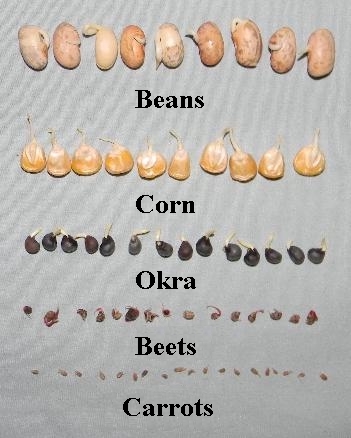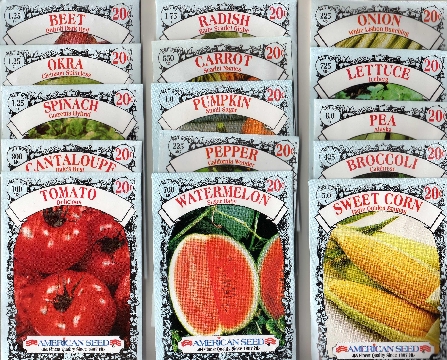| Seed Type | Fresh, Just Purchased | 2 Years Old | 3 Years Old | 6, 7, or 8 Years Old | 11 Years Old | 13 or 15 Years Old |
| Beans | Pinto "GV" | Pinto "GV" | Pinto "GV" | Pinto "GV" (7 years old) | None | Pinto "GV" (15 years old) |
| Beets | Detroit Dark Red "AS" | Detroit Dark Red "NK" | Detroit Dark Red "AS" | Sugar Beets "SM" (6 years old) | Detroit Dark Red "AS" | None |
| Carrots | Danvers Half Long "AS" | Danvers "FM" | Danvers Half Long "AS" | Danvers Half Long "AS" (8 years old) | Danvers Half Long "AS" | None |
| Corn | Early Golden Bantam "AS" | Early Golden Bantam "NK" | Stowell's Evergreen "SS" | Early Golden Bantam "AS" (8 years old) | Early Golden Bantam "AS" | Early Golden Bantam "AS" |
| Okra | Clemson Spineless "AS" | Emerald "FM" | Emerald "FM" | None | Dwarf Green Pod "AS" | Dwarf Green Pod "AS" |




































 Abbreviations:
Abbreviations:
